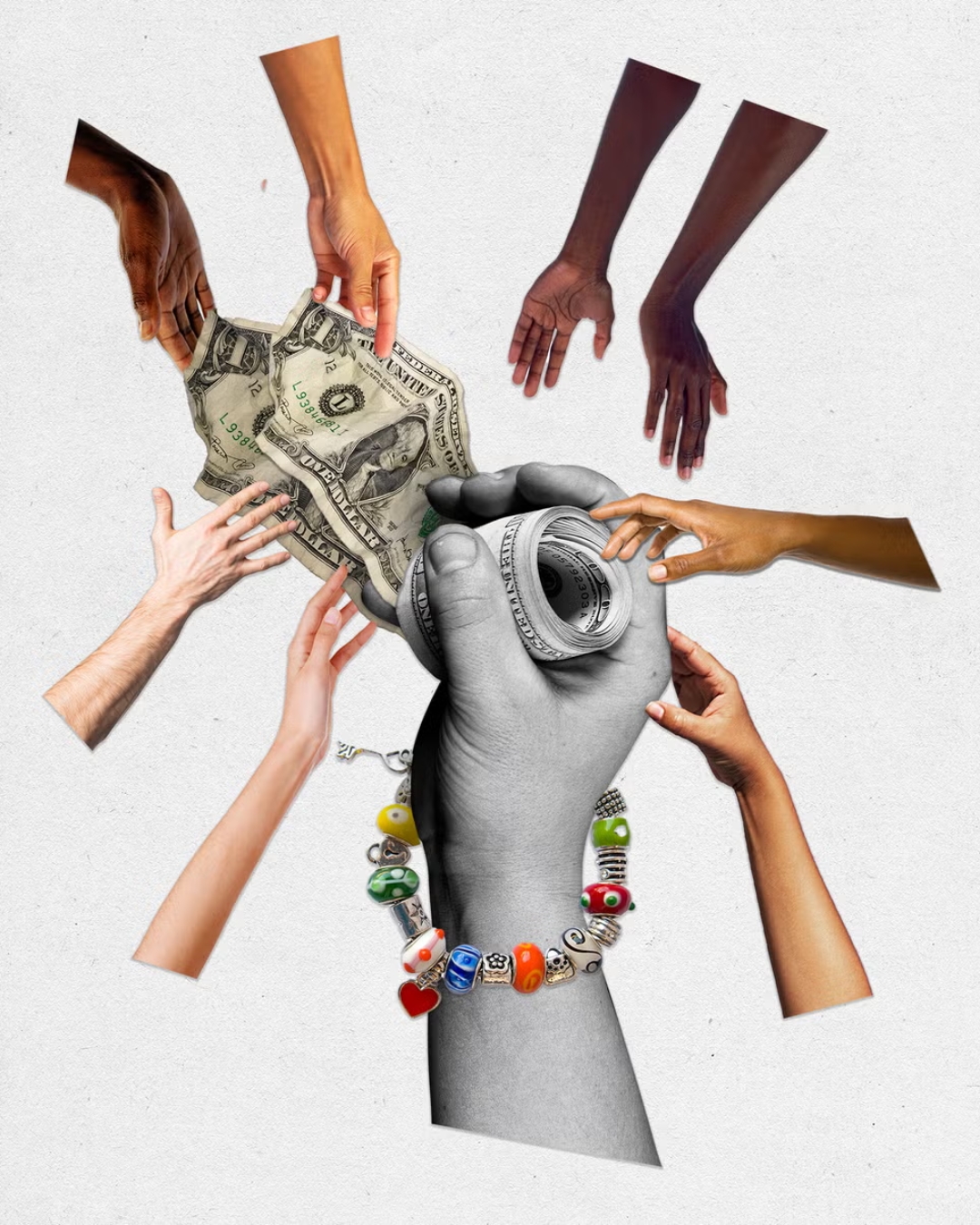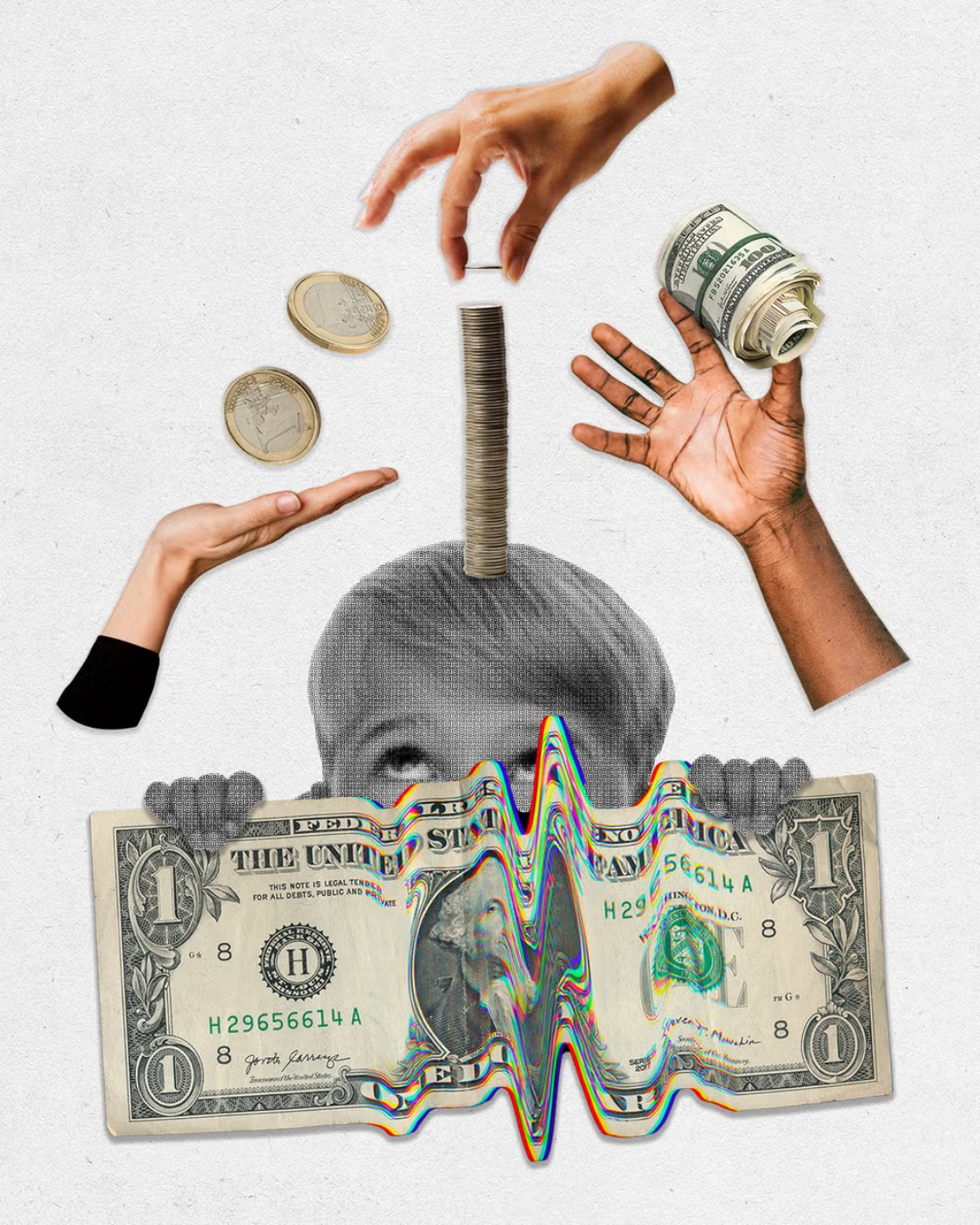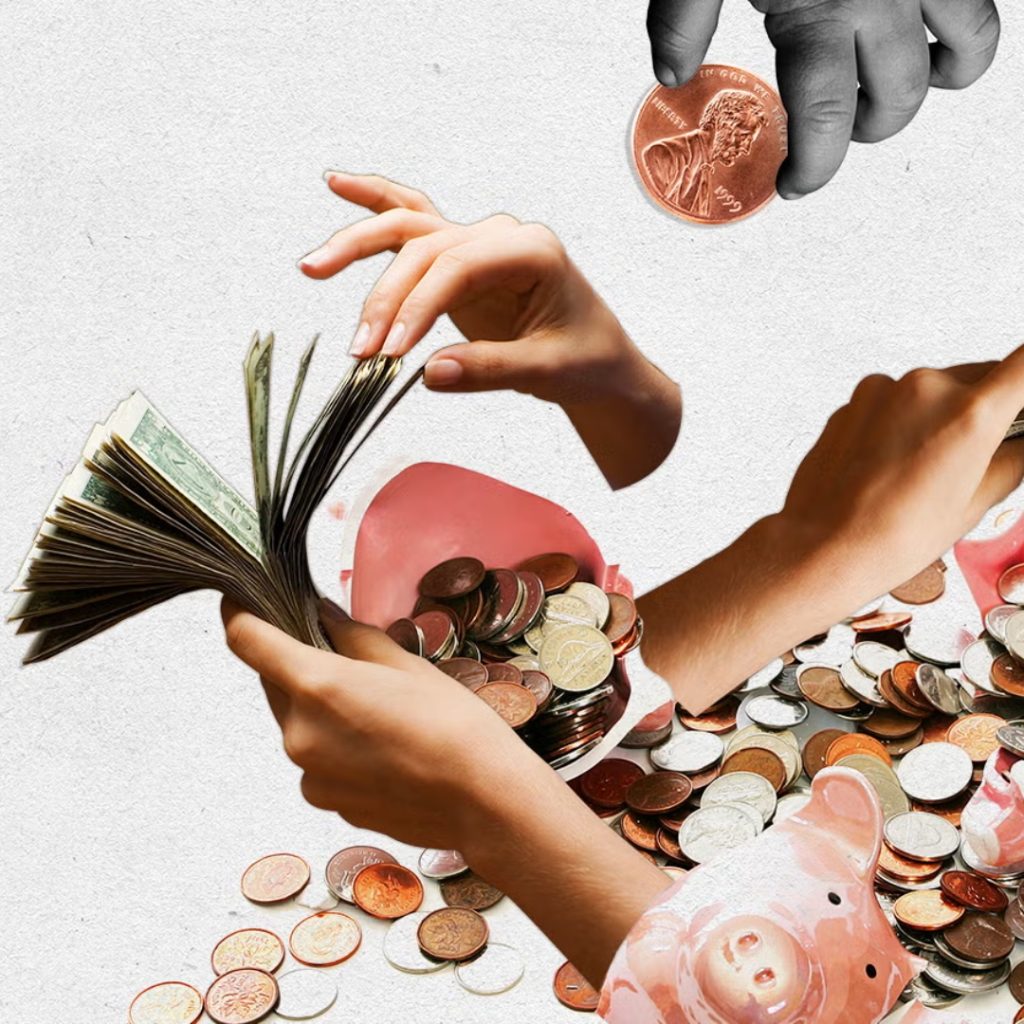As the child of a popular mum blogger in the 2010s, Vanessa* worked throughout her childhood and adolescence. She filmed videos, edited social media posts, and participated in brand deals with companies like Disney—plus, she wrote and starred in content for the blog that became her mother’s—and subsequently, her family’s—livelihood. When she turned 18, it turned out that not a single dollar from these efforts had been put aside for her.
If you’re surprised, you shouldn’t be. There is only one state in the entire United States—Illinois—where child influencers are legally entitled to a percentage of the money they help earn by being featured in monetised content. Although similar legislation has been introduced in several US states this year, the fact remains: As of publication time, the vast majority of children who generate profits for their influencer parents—whether through brand deals, sponsorships, or direct payment from platforms—are legally unprotected and could be left with nothing in an industry valued at $32 billion (US$21 billion) in 2023. In the teeming, controversial world of family content creators, what happened to Vanessa is not uncommon. She spent the majority of her life up through her teenage years working on and being featured in her mother’s profitable blog and social media accounts, and she never saw a dime for her labour.
Now a young adult in her 20s looking back on her childhood, Vanessa says the reality of the blog being the family’s main source of income put an enormous amount of pressure on her. “There was this idea that you have to look perfect and pretty and like nothing is wrong all the time in front of the camera,” she says. “And if it seemed like I wasn’t trying hard enough to maintain that image, like my smile wasn’t as bright as it should be or I didn’t say a line with enough enthusiasm…that would usually devolve into accusing me of not caring about our family. I was told by my mum, ‘Do you want us to starve? Do you want us to not be able to make our payment next month on the mortgage?’”
Being the child of an influencer, Vanessa tells me, was the equivalent of having a full-time job—and then some. She remembers late nights in which the family recorded and rerecorded videos until her mother considered them perfect and days when creating content for the blog stretched into her homeschooling time. If she expressed her unease, she was told the family needed her. “It was like after this next campaign, maybe we could have more time to relax. And then it would never happen,” she says. She was around 10 years old when she realised her life was different from that of other children. When she went to other kids’ houses, she was surprised by how they lived. “I felt strange that they didn’t have to work on social media or blog posts, or constantly pose for pictures or videos,” she says. “I realised they didn’t have to worry about their family’s financial situation or contribute to it.”
“Do you want us to starve? Do you want us to not be able to make our payment next month on the mortgage?"
Vanessa, who requested anonymity to speak freely about her family dynamics, says she helped create content for huge companies like Huggies and Hasbro when her mom landed endorsement deals. When she reached puberty and began menstruating, her mother had her do sponsored posts for sanitary pads. “It was so mortifying,” she says. “I just felt like I wanted to crawl into a hole and never come out.”
Being part of an influencer family changed everything about her life, Vanessa says. “Sometimes I didn’t know where the separation was between what was real and what was curated for social media.” And her mother’s online presence indelibly warped their relationship. “Being an influencer kid turned my relationship with my mom into more of an employer-employee relationship than a parent-child one,” she says. “Once you cross the line from being family to being coworkers, you can’t really go back.”

Vanessa will never get back the childhood that she gave up for the family business—not getting any of the money she helped earn is just another disappointment, even if it was entirely unsurprising. “My mum never led me to think there would be anything. She would continually remind me that the money she was getting from the blog or sponsorships was going toward us anyway through basic needs and that should be enough.”
Last August, Illinois became the first state in the country to pass history-making legislation, which dictates that children under the age of 16 are entitled to a percentage of the earnings of vlogging content in which they appear. The money must then be held in a trust, which the child can access once they turn 18, and former child influencers can sue their parents if those requirements are not met. Because Illinois is the only state that regulates influencer earnings like this, if and how a child shares in those profits is often entirely dependent on the parents’ whims. The money side of the “sharenting” industry tends to be murky and secretive.
Garrett Gee, 35, of the Bucket List Family, which boasts over 5 million followers and subscribers, says that each of his three kids has their own bank account, with money set aside for them for their work on brand partnerships. He’s frank about how he sees content creation: as a “constant flow of intense work.” He hopes that the money and the platform he’s been able to give them will set them up for the future and launch their careers (though one could argue they were already financially set, as Gee netted $83 million (US$54 million) after selling an app in 2014). “Our kids are in a very incredible situation where not only will they have healthy bank accounts they worked hard and earned ready for them at whatever stage—when they’re 18 or whatever—but also they’ll have the opportunity of a social media account with hundreds of thousands of followers.” Each of the Gee children has their own Instagram account, which are verified and boast an average of 260,000 followers. Though the accounts are currently managed by their parents, the plan is that the children will one day get control of them.
Adrea Garza, 39, the mom behind @garzacrew, feels similarly. She tells Cosmopolitan that she models the way she pays her 7-year-old twin daughters Koti and Haven after the Coogan Law, a California statute that entitles child actors to 15% of their earnings to be held in a trust until they reach the age of 18. For each brand deal Garza accepts on behalf of their family—she didn’t feel comfortable sharing the pay range for such deals with me—she says 15% goes to each of her children to be held until they’re of age. “Koti and Haven don’t see content creation as work, but obviously they’re making money doing it,” Garza says. “And it’s going to help provide for their future. Whether they go on to college and become an astronaut, this money will pay for their schooling until NASA. Or if they want to pursue something in the entertainment industry. It’s an opportunity most people don’t get in life where you get to pick what you’re passionate about and it’s not based on anything financial.”
For Veronica Merritt, 38, the creator behind @thismadmama, the calculations are more complicated. As a mother of 12 who mostly documents life with her large family, she claims that when she makes a video with one or two of her children, she’ll share the profits with them, but if the video is a haul of the entire family going shopping at Dollar Tree, she considers the $10 they got to spend there to be their payment.
“If I could work a regular job and make enough money to survive, I would do that instead. But I can’t.”
When she made a TikTok comparing two of her daughters, the younger felt embarrassed because Merritt called her the “weird kid at school” in contrast to her older sister, who was labeled “popular” and “bubbly.” But Merritt says they decided not to take the video down because it was doing well and making money through TikTok’s monetisation program, which pays creators for qualified views. The video is now pinned to the top of her page, with 2.3 million views and counting, netting $1,100 as of late February. As a form of reparation, she decided to split the profit from the video between her two daughters, with the stipulation that they use the money for the bedroom makeovers they’ve been wanting.
Veronica estimates that she makes between $4,500 (US$3,000) and $10,500 (US$7,000) in an average month on TikTok simply based on views and says she wouldn’t be able to get another job that would allow her to make that much money—Veronica didn’t graduate from college and adds that her health is poor. “If I could work a regular job and make enough money to survive, I would do that instead,” she says, noting that she only spends around an hour or two each day editing content. “But I can’t. The best part of my job as a creator is probably the money. The worst part is probably the negativity that comes with it, the hate.”
Grant Khanbalinov, 33, used to easily pull in six figures as a family vlogger, supplementing his and his wife’s incomes from their full-time jobs. Khanbalinov estimates that the family would take on about two to three brand deals per month, each of which paid up to $9,000 (US$6,000), which could earn the family over $150,000 ($100,000) per year for sponsored posts. But when Khanbalinov decided to take his kids offline, that spigot stopped flowing altogether.

Khanbalinov has had zero new offers since he took his kids offline. “When we were showing our kids, brands were rolling in left and right—clothing companies, apps, paper towel companies, food brands. They all wanted us to work with them,” he says. “Once we stopped, we reached out to the brands we had lined up and 99 percent of them dropped out because they wanted kids to showcase their products. And I fought back, like, you guys are a paper towel company—why do you need a kid selling your stuff?”
The law has woefully lagged behind the culture here, but there’s signs that policymakers might finally be catching up. In 2023, in addition to Illinois, three other US states—New York, Washington State, and New Jersey—proposed bills to protect child influencers. Contrast that with the flurry of legislative activity in just the first two months of 2024. Seven more states—Maryland, Georgia, Ohio, Missouri, California, Arizona, Minnesota—have introduced similar legislation. Some of the bills are going one step further to protect the privacy of the kids featured in this content. In some states, proposed legislation would include a clause that borrows from a European legal doctrine known as the “right to be forgotten”—it would allow someone who was featured in content when they were a child to request that platforms permanently delete those posts. None of the current legislation introduced, however, would outright bar the practice of featuring minors in monetised content.
The movement on this issue was glacial for years, but it finally feels like the ice has thawed. Much of that progress is thanks to activists like Cam Barrett, a 25-year-old creator (@softscorpio) who uses TikTok to talk about her experience of being overshared in their childhood and adolescence. Barrett doesn’t go by her legal name anymore because of the online history it’s tied to. “I love my legal name,” Barrett tells me. “I just don’t love the digital footprint attached to it.” Last year, Barrett testified in front of the Washington State legislature as a proponent of a bill to protect child influencers. This year, they testified again—this time, in front of the Maryland legislature.
"the right to be forgotten"
“As a former content kid myself, I know what it’s like to grow up with a digital footprint I never asked for,” Barrett told the Maryland House of Delegates Economic Matters Committee in February. “As my mum posted to the world my first-ever menstrual cycle, as she posted to the world the intimate details about me being adopted, her platform grew and I had no say in what was posted.” And yet, Cam says their activism has been healing.
For Cam and other influencer children, getting a paycheck won’t give them back what they lost—a normal childhood unobstructed by the cameras pushed into their faces. But it could be the beginning of some version of restitution. “My friends say I’m fighting for little Cam,” she tells me. “It feels very healing because I didn’t have anyone to fight for me as a kid.”



